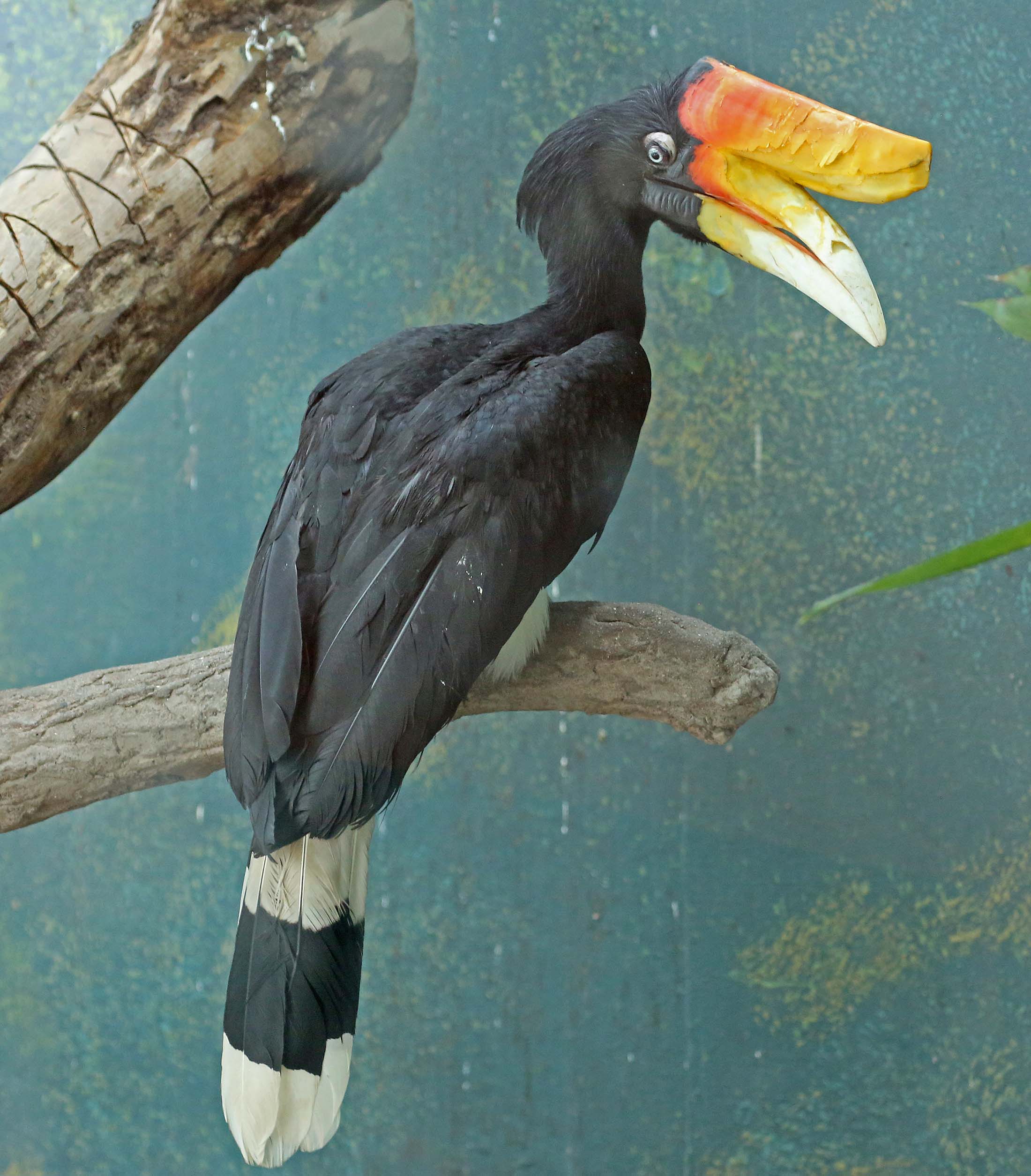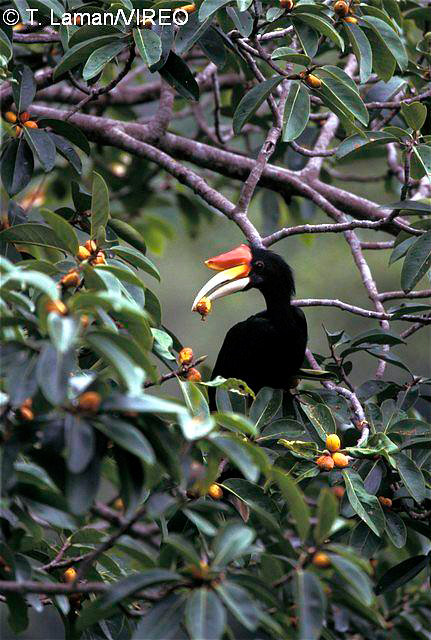

Then, together with her mate, the two adults feed and care for the young until they can become independent.įledgling Rhinoceros Hornbills live in the nest for about 80 days before they are ready to go out on their own. When they hatch, she knows it is time to leave the nest, so she breaks out of the cavity. Imagine 3 months in a tiny space with your eggs, completely dependent upon another bird to bring you food. Her 1-3 eggs incubate for about 3 months.
#Rhinoceros hornbill eating fig full
The nest is both hidden and it might be unappealing to predators who have no interest in invading a nest full of feces. This is the best way these birds have to keep their nests and their young safe from predators. She leaves a small opening where her mate can bring her food. She uses mud, feces, and pieces of food to line her nest and hide herself and her eggs in the cavity. Unlike other cavity-dwellers like woodpeckers and many ducks, the female Rhinoceros Hornbill almost completely seals herself into the tree. They are cavity nesters, which means that they find a hole in a tree and turn that into a nest. Unique Breeding BehaviorĪlthough the appearance of the Rhino Hornbill gets the most attention, we can’t ignore their fascinating breeding behavior, too. The casque is not a burden for the hornbill. It is also supported by a hollow bone structure and is quite light, made of keratin, hollow cells, and supported by hollow bone. It is made of keratin, the same kind of protein that gives us healthy hair. Is the Casque Heavy?īut the casque is actually quite lightweight. They aren’t record-breaking birds, by any means, but they are definitely big enough to be intimidating in the wild or even in captivity.

The Greater Flamingo weighs between 4.4-8.8 pounds.Males are larger than females.įor North American readers who want to compare the size of a Rhinoceros Hornbill to birds they are more familiar with, here are some comparisons: They can weigh up to 7.5 pounds and are often 3 feet long. Watch this informative video to learn more about the differences between these two birds.

The Rhinoceros Hornbill also has a yellow and red casque, but the Great Hornbill’s casque is just yellow.The casque of the Rhinoceros Hornbill protrudes upward, as opposed to the Great Hornbill’s casque, which is flatter against the bill.Both birds have very similar tails: long and white with a thick black bar near the base of the tail.The Great Hornbill’s wings have a white and yellow stripe, but the Rhinoceros Hornbill’s wings are solid black.Note that the Great Hornbill has a whitish neck, whereas the Rhinoceros Hornbill’s neck is all black.Although they both have large casques, they are quite easy to tell apart. The Rhinoceros Hornbill and Great Hornbill have some overlapping territory, including Thailand. There are several kinds of hornbills in the world.
#Rhinoceros hornbill eating fig how to
How To Tell the Difference Between the Rhinoceros Hornbill and the Great Hornbill Some naturalists have observed that the casque may serve as a steadying support as they lean against a tree and break off large pieces of bark – or as they dig around in the dirt for insects.The casque amplifies the bird’s calls and songs, helping them to more effectively protect their territory.Both sexes have a casque, which may be used to attract a mate.Note that unusual-looking horn that extends from the top of its bill – that is the casque.


 0 kommentar(er)
0 kommentar(er)
